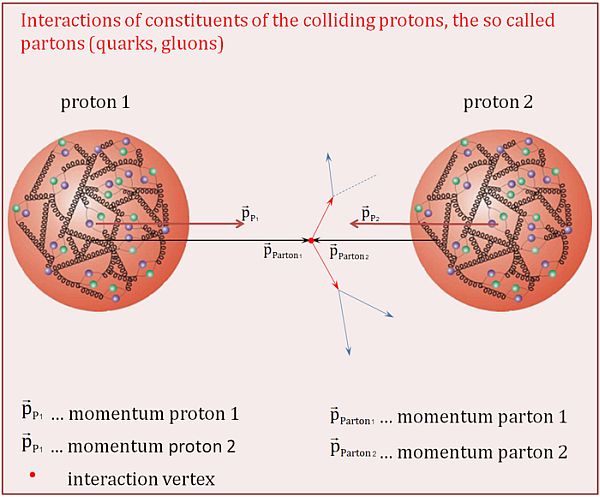When protons collide
The powerful machine LHC accelerates and steers billions of protons to collide with billions of other protons. The goal of this work is to answer fundamental questions to understand Nature. But what really happens when protons collide?
Protons consist of quarks bound by gluons, and in a head-on collision between two protons it is the constituent quarks and gluons that collide.
The graphic below pictures two protons about to collide. Inside each proton you can find a "sea" of quarks and gluons. Why so many? Haven't you learned that there are only 3 quarks inside a proton? Well, we say that a proton consists of 3 "valence" quarks, but also a whole bunch of “sea” or “virtual” quarks and anti-quarks stemming from gluons.

What is the outcome of such a collision?
When protons collide with such large energies as at the LHC, the collision results in a shower of all types of particles, the ones usual matter is made of, and others that only existed just after the Big Bang.
The new particles are usually much heavier than the original colliding particles, thanks to the relation E=mc2. To say it simply: All the energy we put into the collision can come out as mass instead! So, in a proton-proton collision “anything” can happen, provided some important principles are respected, such as energy and momentum conservation.